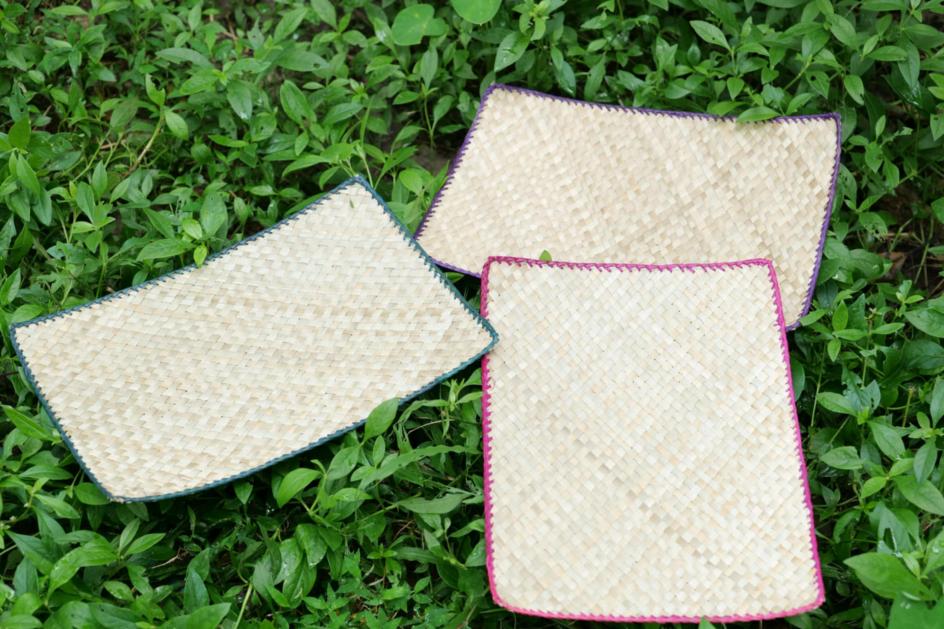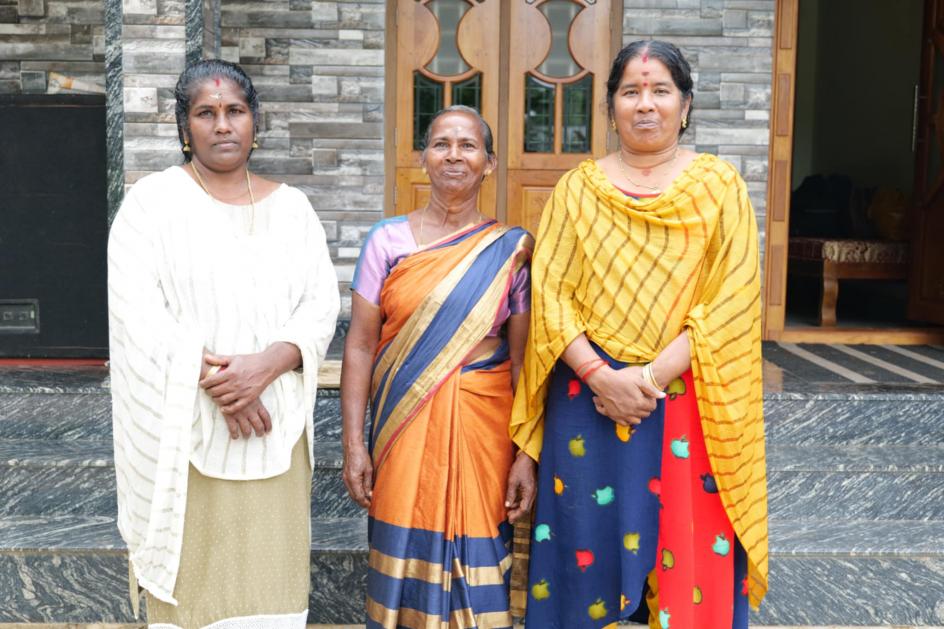
Pushpamma, the heart of our unit, was absent today due to an unavoidable errand, Beena Chechi explained as she headed towards the riverside to collect screw pine leaves. Our group comprises four units, each with five members, though currently, only two are operational. Beena Chechi returned with freshly cut screw pine leaves in hand.
Vechur, a village nestled in Vaikom taluk of Kottayam district, on the banks of Vembanad Lake, is home to the Vechur Thazhapaaya (screw pine mat) production group. This collective effort of 20 women operates under the Kerala government’s Responsible Tourism Mission initiative.
 ‘We must be cautious of the thorns while cutting the screw pine leaves,’ Beena Chechi cautioned with a smile. She placed the freshly cut leaves in the yard and settled on a small stool. Another woman joined her. ‘Firstly, we remove the thorns from the leaves, then split, dry, and soften them. Afterward, the dried strips are cut into smaller pieces, boiled, dried, and woven into mats,’ Chechi explained casually. However, the reality is that none of these steps are easy.
‘We must be cautious of the thorns while cutting the screw pine leaves,’ Beena Chechi cautioned with a smile. She placed the freshly cut leaves in the yard and settled on a small stool. Another woman joined her. ‘Firstly, we remove the thorns from the leaves, then split, dry, and soften them. Afterward, the dried strips are cut into smaller pieces, boiled, dried, and woven into mats,’ Chechi explained casually. However, the reality is that none of these steps are easy.
The challenges begin with the leaf-cutting process. Together, the women remove the sharp thorns and strip the leaves. The leaves are then coiled and dried before further processing. The dried strips are cut into thinner strips, boiled, and sometimes dyed. Dyeing involves boiling the strips in colored water for about half an hour. After boiling, the strips are left to dry in the shade before being woven into mats, bags, or purses.
Transforming screw pine leaves into mats, files, and bags requires significant collective effort and time. Initially, the group had four units with five members each. However, due to various reasons, only two units, Snehadeepam and Devi Durga, are currently active. The women work from their homes to produce these screw pine mats.
 ‘These are the dried strips ready for dyeing,’ Maya explained, showing the strips. ‘For dyeing, we boil water with dye, dip the strips, boil one side for fifteen minutes, then flip and boil the other side,’ she demonstrated while immersing the strips into the boiling dye.
‘These are the dried strips ready for dyeing,’ Maya explained, showing the strips. ‘For dyeing, we boil water with dye, dip the strips, boil one side for fifteen minutes, then flip and boil the other side,’ she demonstrated while immersing the strips into the boiling dye.
After dyeing and drying, the strips are ready for weaving. Another woman, coiling fresh screw pine leaves nearby, joined in with a smile, ‘We call this coiling. These coiled strips are dried before further processing.’ The coiled strips looked beautiful, almost artistic. ‘Would you like to try coiling?’ one of the women asked, noticing my observation. Enthusiastically, I nodded, and she handed me some half-coiled strips. Following her instructions, I began coiling them.
 By then, Maya Chechi returned with the dyed strips. ‘These need to dry completely now,’ she said. Together, we spread them out to dry. ‘Do you know how to weave?’ she asked me. Smiling, I replied, ‘No’ ‘Our families have traditionally been weavers of screw pine mats. This is our livelihood. Thanks to the RT Mission, this craft, on the verge of disappearing, is still alive,’ she said with pride.
By then, Maya Chechi returned with the dyed strips. ‘These need to dry completely now,’ she said. Together, we spread them out to dry. ‘Do you know how to weave?’ she asked me. Smiling, I replied, ‘No’ ‘Our families have traditionally been weavers of screw pine mats. This is our livelihood. Thanks to the RT Mission, this craft, on the verge of disappearing, is still alive,’ she said with pride.
Under the RT Mission, the government has provided them with loans and a subsidy of ₹10,000. They have also set up stalls for them and arranged for their products to be sold in two resorts. ‘Now we have a steady income and financial independence,’ Maya said, her face beaming with hope and happiness.
 Meanwhile, work continued in full swing. Thorny leaves were being stripped and coiled, and dyed strips were being woven into mats. The aroma of screw pine blossoms filled the air.
Meanwhile, work continued in full swing. Thorny leaves were being stripped and coiled, and dyed strips were being woven into mats. The aroma of screw pine blossoms filled the air.
Content Highlight: Those who make mats out of screw pine and get on with their lives